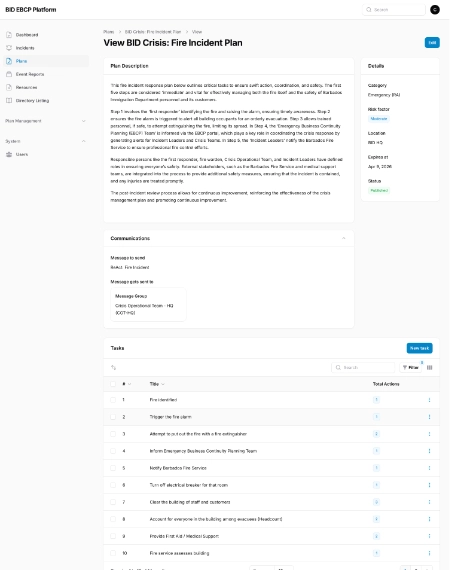
Project
Emergency Business Continuity Planner
• 2 months ago
The Barbados Immigration Department (BID) is undergoing a significant transformation in its approach to crisis management, as they have transitioned to a modern and adaptable electronic contingency application.
The Barbados Immigration Department (BID) is undergoing a significant transformation in its approach to crisis management, as they, via this project, have transitioned from their current paper-based Emergency Business Continuity Plan (EBCP) to a modern and adaptable electronic contingency application. This new and improved system will empower key personnel enabling them to proactively update and maintain a dedicated management system to mitigate disruptions during the course of business.
This new way of working is accomplished through a user-friendly and readily accessible e-tool mobile/desktop application known as the e-EBCP. The portal also mirrors a paper-based system in the event of a catastrophic failure to e-systems.
The e-EBCP provides proactive checklists, guiding Immigration Staff on the carrying out of emergency business continuity disruption response tasks in a methodical order, mitigating operational risks arising from business disruption events, and capturing lessons learned for continuous improvement.
The primary objectives served by converting the current paper-based EBCP into an e-EBCP are as follows:
- Improve Operational Preparedness: Develop an electronic application that facilitates proactive disaster and business continuity disruption planning; maximise organisational preparedness; and establish protocols for organisation-wide responses to various business continuity risks and business disruption contingencies faced by the Barbados Immigration Department should either a natural disaster or human agent-originating threat to business continuity take place.
- Task-oriented Checklists: Convert contingency plans into interactive and responsive checklists that guide pre-identified Immigration Dept staff to perform key threat-response tasks in a logical, organised and systematic manner during business disruption situations.
- Mitigate Operational Risks: Ensure that the electronic application incorporates preventive measures, risk mitigation strategies, and clearly identified and implementable threat-response protocols to minimise the impact of potential threats from disrupting the Immigration Department’s business continuity.
- Lessons Capture and Continuous Improvement: Enable the application to capture lessons learned from past contingencies and facilitate a feedback loop that drives continuous improvement in the Immigration Department's emergency business continuity threat planning, to maximise and enhance the prospects of Immigration Department services’ continuity, notwithstanding actual threat event occurrence.